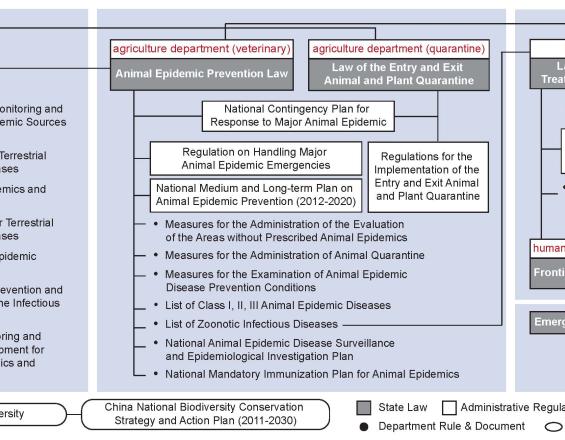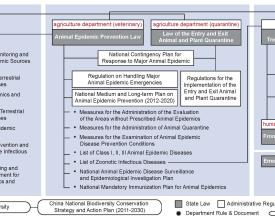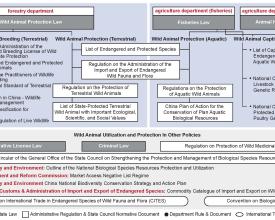Examinar las lagunas y oportunidades de Una Sola Salud en la gestión del riesgo de enfermedades zoonóticas y de la fauna salvaje en China

Abordar los aspectos de salud pública, producción de alimentos y conservación de las epidemias de animales salvajes y las amenazas de enfermedades zoonóticas requiere acciones de múltiples sectores a través de las diferentes interfaces en las que pueden producirse contactos entre animales salvajes, domésticos y humanos. Para entender mejor el papel de las distintas agencias en la gestión de la fauna salvaje y las enfermedades zoonóticas en China, se llevó a cabo un mapeo de las partes interesadas y una revisión de las políticas. Este trabajo revisó las leyes y regulaciones actuales, los informes gubernamentales y los documentos políticos, así como la literatura existente sobre la preparación y prevención de enfermedades zoonóticas entre las autoridades forestales, agrícolas y de salud pública en China, para articular el panorama actual de los riesgos potenciales, los mandatos existentes y las lagunas. Un hallazgo clave fue que las responsabilidades para la gestión de las enfermedades zoonóticas están actualmente fragmentadas entre las agencias.
Impactos
Esta revisión indica que en China existen ámbitos y operaciones para la gestión de los animales salvajes y la vigilancia del riesgo de enfermedades zoonóticas. Sin embargo, la cobertura de enfermedades o agentes patógenos con riesgo zoonótico, así como la gestión de posibles animales salvajes hospedadores para prevenir la aparición de enfermedades, son limitadas en el sistema actual. El sistema suele pasar por alto la detección proactiva de enfermedades zoonóticas o patógenos emergentes con potencial zoonótico en poblaciones de animales salvajes; en su lugar, depende en gran medida de la comunidad investigadora, lo que requeriría mecanismos adicionales para su integración en la vigilancia y las políticas gubernamentales. Las lagunas en la exhaustividad de los mandatos y la aplicación de la gestión de los animales salvajes en los escenarios de riesgo de su utilización siguen siendo motivo de preocupación para la prevención y preparación ante las enfermedades zoonóticas emergentes. La falta de una estrategia cohesionada ha dado lugar a lagunas de datos que dificultan la identificación precisa de las prácticas y los aspectos de riesgo de enfermedades en las cadenas de valor del comercio de animales salvajes. Las lagunas identificadas proporcionan una base para que las autoridades revisen sus mandatos y sistemas y contribuyan a una estrategia nacional general para avanzar en la colaboración de "Una sola salud" entre las partes interesadas gubernamentales y no gubernamentales para optimizar el seguimiento y la vigilancia, la gestión de riesgos y las respuestas de emergencia a las amenazas zoonóticas conocidas y nuevas, y apoyar los esfuerzos de recuperación de COVID-19.


